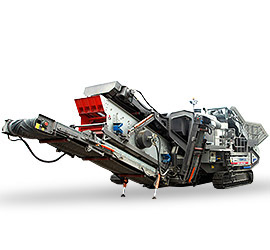Calculating the output of a stone crusher machine involves several factors related to the machine’s design, operational parameters, and material properties. Here’s a step-by-step guide:
—
.jpg) Key Factors Affecting Crusher Output
Key Factors Affecting Crusher Output
1. Type of Crusher (Jaw, Cone, Impact, etc.) – Different crushers have varying capacities.
2. Feed Size – Larger input sizes may reduce output capacity.
3. Discharge Setting (Closed Side Setting/CSS) – Smaller settings produce finer material but lower throughput.
4. Material Hardness/Abrasiveness – Harder rocks reduce throughput.
5. Moisture Content – Wet/sticky materials can clog the crusher.
6. Crusher Speed & Stroke (for jaw/cone crushers).
7. Power & Efficiency – tor horsepower affects crushing capability.
tor horsepower affects crushing capability.
—
Steps to Calculate Output
# 1. Theoretical Capacity Calculation
Most manufacturers provide theoretical capacity based on ideal conditions:
– Jaw Crusher:
\[
\text{Output (tons/hour)} = \frac{\text{Width of Jaw (inches)} \times \text{CSS (inches)} \times \text{Speed (RPM)} \times \text{Efficiency Factor}}{1728}
\]
*(Efficiency factor ≈ 0.3–0.6 depending on material and conditions)*
– Cone Crusher:
\[
\text{Output} = \text{Power (kW)} \times \text{Specific Throughput Factor} \, (\text{e.g., 0.5–1.5 tph/kW})
\]
# 2. Empirical Measurement
If operational data is available:
\[
\text{Actual Output} = \frac{\text{Mass of Crushed Material Produced}}{\text{Operating Time}}
\]
– Weigh the crushed material over a fixed period (e.g., 1 hour).
# 3. Adjust for Real-World Conditions
Multiply theoretical capacity by correction factors:
– Hardness Factor: Reduce output by 10–30% for very hard rock (e.g., granite).
– Moisture Factor: Reduce by 5–20% for wet/sticky feed.
– Feed Gradation: Poorly graded feed reduces efficiency.
—
Example Calculation
For a jaw crusher with:
– Jaw width = 36 inches
– CSS = 4 inches
– Speed = 250 RPM





Leave a Reply